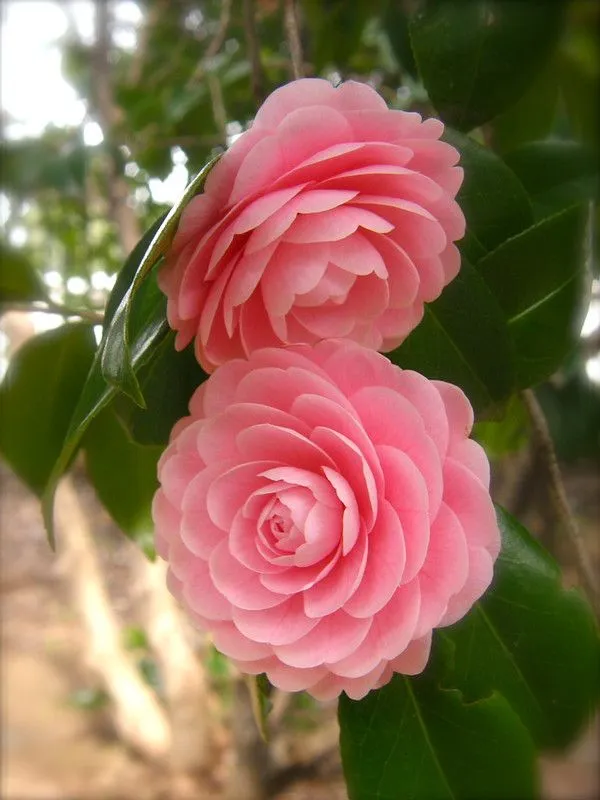
https://dogargardens.com/product/camellia-pink-plants/
The Beautiful Benefits of Camellia Pink Plants
Camellia pink plants are among the most admired ornamental shrubs in gardens across the world. Known for their lush green leaves and exquisite pink blooms, these flowering plants offer far more than just visual beauty. Originating in eastern Asia, particularly China, Japan, and Korea, Camellias have a rich botanical and cultural heritage. The pink variety of Camellia, especially Camellia japonica and Camellia sasanqua, are particularly popular due to their soft, romantic hues and long blooming season.
In this article, we explore the diverse and far-reaching benefits of Camellia pink plants, from aesthetic appeal and garden value to health, environmental, and symbolic advantages.
The Camellia pink plant is more than just a pretty flower—it is a powerhouse of beauty, wellness, symbolism, and environmental benefits.
1. Aesthetic and Ornamental Value
Elegant Blooms
Camellia pink plants produce gorgeous blooms that can brighten up any space. Their layered, rose-like flowers come in various shades of pink, from pale blush to deep rose, creating a romantic and timeless garden atmosphere.
Year-Round Beauty
Unlike many seasonal plants, Camellias provide interest throughout the year. While they bloom mainly in fall and winter (depending on the variety), their evergreen foliage keeps gardens lush and vibrant even when not in bloom.
Landscaping Versatility
Camellia pink plants are suitable for various landscaping designs. They can be used as:
Hedges
Accent plants
Container plants
Foundation shrubs
Their shape and growth pattern can be managed easily with pruning, making them ideal for formal gardens and contemporary designs alike.
2. Emotional and Psychological Benefits
Mood Enhancement
Spending time around blooming Camellia plants has a calming effect. The soft pink color is associated with love, gentleness, and peace. Gardeners often report reduced stress and increased happiness when nurturing these plants.
Therapeutic Gardening
Gardening itself is known to improve mental health, and caring for Camellia pink plants enhances this experience with the reward of beautiful blooms. The slow, steady growth and the patience required to cultivate Camellias promote mindfulness and relaxation.
Symbol of Love and Affection
In the language of flowers, pink Camellias symbolize longing, admiration, and love. They are often gifted as tokens of affection, bringing emotional warmth to both the giver and receiver.
3. Environmental Benefits
Air Purification
Camellias, like many green plants, help purify the air by absorbing carbon dioxide and releasing oxygen. Their dense foliage also helps trap dust and pollutants, contributing to cleaner air around your home.
Soil Health
Camellias prefer acidic soils, and their presence can help maintain soil balance. The leaf litter from Camellia plants adds organic matter to the soil, enriching it with nutrients over time.
Habitat for Wildlife
Camellia shrubs provide shelter for small birds and insects. Pollinators like bees and butterflies are attracted to their nectar-rich flowers, promoting biodiversity in your garden.
4. Medicinal and Skin Care Uses
Camellia Oil (Tsubaki Oil)
One of the lesser-known benefits of Camellia plants is their oil. Especially from the seeds of Camellia japonica, Camellia oil is rich in antioxidants, fatty acids, and vitamins A, B, D, and E. This oil has been traditionally used for:
Skin hydration
Reducing signs of aging
Soothing irritated skin
Strengthening nails
Hair conditioning
Anti-inflammatory Properties
Some parts of the Camellia plant have been studied for their anti-inflammatory and antibacterial properties. Though not as extensively used in modern medicine, they hold potential in natural healing traditions.
5. Low Maintenance and Resilient Nature
Hardy Plant
Camellia pink plants are generally robust and can tolerate a range of environmental conditions, especially once established. Many cultivars are resistant to common pests and diseases, making them easy to manage.
Long Lifespan
With proper care, Camellia plants can live for decades. This makes them an excellent investment for long-term garden beauty and ecological benefits.
Drought Tolerance
Although Camellias prefer moist, well-drained soil, they are quite resilient to occasional dry spells, especially older, well-established plants.
6. Cultural and Historical Significance
Asian Traditions
In Japan and China, Camellias have been revered for centuries. They are featured in traditional art, poetry, and festivals. In Japan, the Camellia (tsubaki) is a symbol of divinity and purity.
Symbolism in Western Culture
In Victorian England, Camellias became a symbol of admiration and refinement. The pink variety, in particular, was used to convey affection and tenderness in the secret language of flowers.
Fashion and Art
Camellias, especially pink ones, have inspired fashion designers and artists. Coco Chanel famously made the Camellia her signature flower, associating it with elegance, simplicity, and style.
7. Eco-Friendly Alternative to Decorative Items
Natural Décor
Instead of using artificial flowers or chemical air fresheners, Camellia pink plants provide a natural, eco-friendly way to enhance indoor and outdoor spaces. Their fragrance (though light in some varieties) and visual appeal add charm without harming the environment.
Green Gifting
Gifting a Camellia pink plant is more sustainable than cut flowers or synthetic gifts. It promotes plant care and appreciation of nature, making it a thoughtful, eco-conscious choice.
Note:The Camellia pink plant is more than just a pretty flower—it is a powerhouse of beauty, wellness, symbolism, and environmental benefits.
8. Educational and Hobby Benefits
Learning Tool
Camellia plants offer an excellent opportunity for learning about plant care, botany, and horticulture. They are often included in school gardening programs and botanical studies.
Hobby Gardening
For amateur gardeners, Camellia pink plants are rewarding to grow. Watching them flower after months of care brings joy and a sense of achievement.
9. Seasonal Interest and Blooming Diversity
Winter Blooms
One of the most valued benefits of pink Camellias is that they bloom during late fall and winter—a time when most other flowers are dormant. This adds vibrant color to an otherwise dull landscape.
Variety of Cultivars
There are numerous cultivars of pink Camellias, offering different shades, flower shapes (single, semi-double, peony form), and sizes. This diversity allows for personalized garden designs.
10. Compatibility with Other Plants
Camellias thrive alongside other acid-loving plants such as:
Azaleas
Rhododendrons
Ferns
Hydrangeas (in acidic soil)
This compatibility allows gardeners to create cohesive and attractive planting schemes that enhance the overall visual impact.
11. Indoor and Outdoor Use
Potted Camellias
Camellia pink plants can also be grown in pots, making them suitable for patios, balconies, and indoor use (with proper light and humidity). This adds to their versatility and expands their appeal to urban gardeners.
Indoor Air Enhancement
When grown indoors, these plants contribute to better air quality and provide a calming, natural presence that enhances home décor.
12. Encouraging Sustainable Practices
Caring for Camellia plants encourages eco-conscious habits like:
Composting plant material
Avoiding synthetic fertilizers
Promoting organic gardening
Attracting pollinators
This helps promote sustainability on an individual level.
13. Allergy-Friendly Option
Unlike heavily fragrant plants that can trigger allergies, many Camellia pink varieties are lightly scented or unscented, making them a suitable flowering plant for allergy-sensitive individuals.
14. Economic and Commercial Value
Camellias have economic value as well:
Camellia oil is used in cosmetics and skincare.
Nurseries profit from selling various Camellia cultivars.
Landscapers use Camellias in commercial and residential projects, increasing property aesthetics and value.
15. Customization Through Hybridization
Camellias are widely hybridized to produce new varieties with improved disease resistance, unique flower forms, and customized blooming seasons. This allows gardeners to select plants best suited to their specific needs.
Conclusion
The Camellia pink plant is more than just a pretty flower—it is a powerhouse of beauty, wellness, symbolism, and environmental benefits. Whether you’re a home gardener, a landscape designer, a skincare enthusiast, or simply a nature lover, this plant offers a multitude of rewards. From the emotional joy of its blooms to its role in purifying air and promoting biodiversity, the Camellia pink plant truly deserves a place in every garden.
By choosing to cultivate Camellias, you not only enhance your surroundings but also connect with centuries of botanical heritage, artistic inspiration, and sustainab
le living. It’s no wonder this plant continues to bloom in popularity across the globe.
Let me know if you’d like this article formatted for a blog or if you need images, SEO keywords, or social media captions related to Camellia pink plants.





